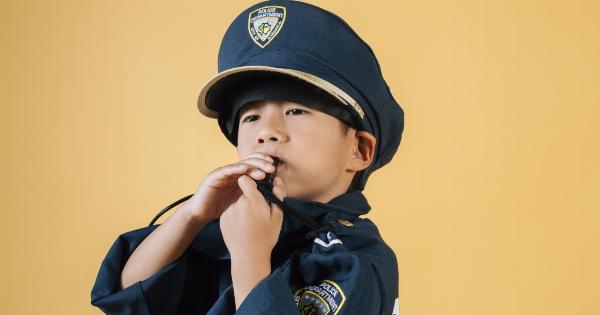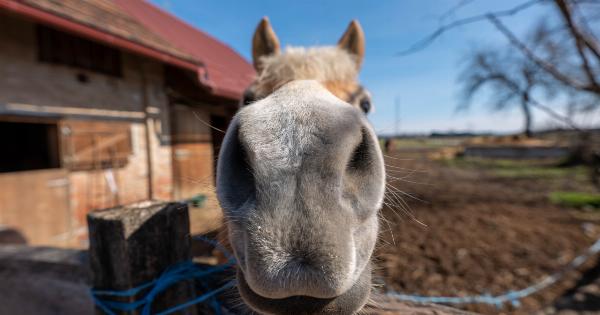As children grow, they develop different habits and behaviors. Some of these habits, however, are cause for concern to parents. Snoring, snapping, and whistling in sleep are primarily the three habits that cause parents to worry.
The sound can be impossible to miss and, in most cases, extremely loud. These habits can negatively impact a child’s health and well-being, which is why it is essential that parents understand what causes these habits and what they can do to help their child.
This article will explore the reasons behind a child’s snoring, snapping, and whistling in sleep.
What is Snoring?
Snoring is a sound produced by the vibration of the respiratory structures and is caused by the narrowing of the airways when a person breathes. Snoring can occur at any age, and children are not exempt from the condition.
The reasons why children snore can vary, and it can happen for several reasons, including:.
Tonsillitis and Adenoiditis
Tonsils and adenoids are lymphoid tissues located at the back of the throat and the nasal cavity’s roof, respectively. In children, these tissues can become enlarged due to an infection, commonly referred to as tonsillitis or adenoiditis.
Enlarged adenoids and tonsils can cause snoring as they narrow the airways. This is particularly likely to occur when the child is asleep, leading to snoring.
Nasal Congestion
Nasal congestion is one of the leading causes of snoring among children. This condition makes it difficult for a child to breathe through the nasal cavity, which forces them to breathe through their mouth. Mouth breathing, in turn, causes snoring.
Nasal congestion can be caused by a cold, allergies, or a deviated septum. If the child has a cold or allergies, it will be temporary, and the snoring will likely subside once the congestion is cleared.
Obstructive Sleep Apnea
Obstructive sleep apnea (OSA) is a condition where the child’s airway is blocked or partially blocked during sleep. The blockage can be caused by enlarged tonsils, a deviated septum, or a narrow airway.
In addition to snoring, a common symptom of OSA is heavy breathing followed by a period of silence, which is then interrupted by a loud snort or gasp when the child wakes up to breathe.
What is Snapping?
Snapping, also known as teeth grinding or bruxism, happens when people grind, clench, or gnash their teeth. Bruxism is a very common habit for children, and it typically occurs at night when they are asleep.
Bruxism can lead to headaches, earaches, and jaw pain if the grinding or clenching continues over time.
The Causes of Snapping
The causes of snapping or bruxism in children are not always clear. However, some common causes of bruxism include stress, anxiety or a sleep disorder. Additionally, children with a misaligned bite or that are having teething issues can grind their teeth.
While teeth grinding is not typically a severe problem for children, it can damage their teeth if it persists over time.
What is Whistling?
Whistling in sleep, also known as mouth breathing, is a condition where children sleep with their mouths open. This can result in the production of a whistling sound during sleep.
Mouth breathing can lead to various health problems, including bad breath, dental problems such as cavities, and gum disease.
The Causes of Whistling
The causes of whistling during sleep in children are similar to those of snoring. The primary cause of mouth breathing is nasal congestion.
When a child has congestion, they may find it challenging to breathe through their nose, forcing them to breathe through their mouth, which results in a whistling sound during sleep. Additionally, blockages in the nasal passages can be caused by a deviated septum, allergies, or a cold.
What Can You Do to Help Your Child?
Treating snoring, snapping, and whistling in children can be challenging. However, there are treatment options available to relieve their symptoms.
If your child is experiencing any of these symptoms, it is important to get them checked by a doctor, who will examine them and try to identify the underlying cause. The following are some remedies you can try to help your child:.
Change Sleeping Position
If your child is snoring or whistling during sleep, it may help to make simple adjustments to their sleeping position.
You can encourage them to sleep on their side rather than their back, which can help keep the airway open and reduce the chances of snoring.
Remove Obstacles
You can quickly eliminate snoring by removing anything that obstructs your child’s airway. For instance, remove stuffed toys and pillows from your child’s bed, which may cause breathing problems during sleep.
Additionally, it may help to remove any material around the child’s neck, such as a necklace or sports jersey with a tight neck.
Use a Humidifier
If your child is suffering from nasal congestion, using a humidifier can help to increase moisture in the air, making breathing through the nose easier. It may also soothe irritated nasal passages, making congestion less severe.
Medical Intervention
If your child’s snoring, snapping, or whistling is severe, your doctor may suggest medical intervention. This could include the removal of tonsils or adenoids, or the usage of medication to treat allergies or nasal congestion.
Additionally, if your child has sleep apnea, positive airway pressure therapy (PAP) may be prescribed.
Conclusion
Snoring, snapping, and whistling in sleep are common among children. These conditions can be alarming to parents and cause concern for the child’s health.
The causes of these conditions can vary, including enlarged tonsils, nasal congestion, and sleep apnea, among others.
While there are various treatments that can help alleviate your child’s symptoms, it is essential that parents are proactive in getting their child checked by a doctor and making the necessary changes to the child’s environment to help relieve their symptoms.






























